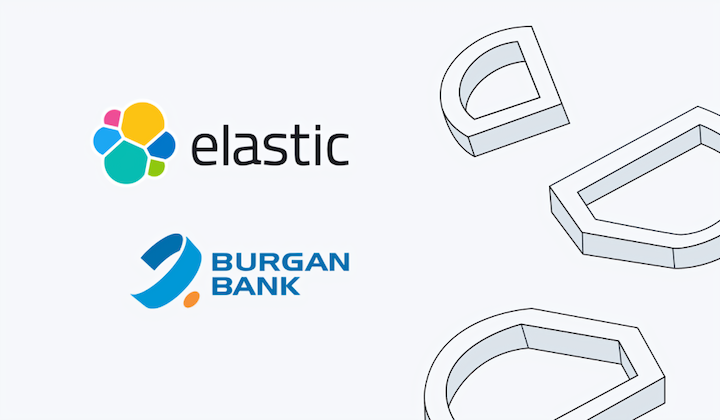How Burgan Bank Türkiye transformed observability and security with Elastic

Burgan Bank Türkiye Burgan Bank K.P.S.C., a subsidiary of Kuwait Projects Company (KIPCO) Group, is one of the largest holding groups and important banking groups in the Middle East and North Africa (MENA) region established in Kuwait in 1977.
The bank acts as a solution partner for its customers and provides services through its 26 branches located in 13 important industrial and trade regions of Turkey. The bank aims to establish long-term relations with its customers by emphasizing on stability and quality while conducting its activities in accordance with the principles of banking ethics, especially accuracy and reliability.
Overcoming initial challenges: From OpenShift to bare metal
The journey for Burgan Bank Türkiye began with Elastic on OpenShift, using containerization to support its growing suite of applications. However, it soon encountered storage limitations with its existing solution. This bottleneck prompted a strategic shift: deploying its new Elastic cluster on bare metal. This move unlocked greater flexibility and performance, setting the stage for a modern observability stack.
Building a resilient Elasticsearch architecture
Led by Burak Düz, senior software manager of the DevOps team, the Burgan Bank team architected a powerful Elasticsearch cluster consisting of:
3 master nodes
3 hot nodes
2 cold/frozen nodes
Machine learning nodes
5 Kibana servers
6 APM server nodes
Nearly every application at the bank streams APM and log data into this cluster, providing a unified view of system health and performance.

Machine learning for proactive insights
Darço Akkaranfil is the chief information office at Burgan Bank Türkiye. When considering the bank’s strategy for technology and innovation and how that improves the bank’s overall service, he says, “Improving the observability of our IT systems has been an important focus area for us. Elastic has supported this goal by helping us detect anomalies early through its machine learning and AI capabilities. This allows us to identify and address potential issues before they impact our customers, contributing to more stable and reliable services."
Machine learning is at the heart of the bank’s observability strategy. By analyzing application performance monitoring (APM) data, the team can detect anomalies based on the request path of transactions, http response code, and custom business logic, such as failed transaction rates and business errors.
AI assistant: Secure, on-prem observability
A standout innovation is Burgan Bank’s AI assistant integrated directly with Elasticsearch for APM transactions. Powered by the on-premise vLLM “Qwen/Qwen3-30B-A3B” model, this assistant allows users to ask natural language questions about transactions, streamlining investigations and troubleshooting. Importantly, the solution is air-gapped and deployed entirely on-prem, meeting the bank’s strict security requirements and ensuring sensitive data never leaves its local network.
Centralized monitoring: Faster response, deeper insights
Elasticsearch now serves as the bank’s centralized monitoring hub, delivering impressive results:
Incident response time was reduced by 90%.
Root cause analysis accelerated from hours to just minutes.
Kibana dashboards provide real-time visibility into server errors, latency, user activity, and release management. Logstash — running over 100 pipelines in OpenShift containers — collects and transforms data from across the bank’s ecosystem.

Advanced alerting, data masking, and integrations
Alerting is tightly integrated. While Zabbix, Grafana, and machine learning alerts feed into Elasticsearch, the main alert dashboard is powered by Alerta, which pulls data directly from Elastic. To protect sensitive information, Logstash uses Ruby filters to mask data like passwords at the API gateway level before it’s indexed, ensuring privacy and compliance.
The Burgan Bank team also uses Elastic’s anomaly explorer for both API gateway and APM jobs and maintains complex service maps to visualize their extensive microservices architecture. Automated reports on service errors and latency are distributed via emails, and a local SMS sender app delivers critical alerts through webhook.
Permissions, security, and strategic partnerships
Security and access control are paramount. Burgan Bank uses lightweight directory access protocol (LDAP) integration and local user roles in Kibana, such as view and reporting and editor, with clear role mappings for default access. Its strategic partnership with Gantek, an authorized Elastic partner, has been instrumental, guiding architecture and licensing, especially for bare metal, on-prem Elastic Cloud on Kubernetes (ECK) deployments.
A flexible partnership with Elastic
Burgan Bank continues to innovate with ongoing projects to integrate APM data with SolarWinds for true end-to-end monitoring across storage and network layers. As its observability journey evolves, the collaboration between Burgan BankTürkiye, Elastic, and Gantek stands as a model for secure, scalable, and intelligent banking IT, offering multiple options and flexibility that will support the bank's expansion and growth.
Why not try Elastic for yourself?
Get started on your Elastic journey today with a free 14-day trial.
DISCLAIMER: The release and timing of any features or functionality described in this post remain at Elastic's sole discretion. Any features or functionality not currently available may not be delivered on time or at all.
In this blog post, we may have used or referred to third-party generative AI tools, which are owned and operated by their respective owners. Elastic does not have any control over the third-party tools, and we have no responsibility or liability for their content, operation or use, nor for any loss or damage that may arise from your use of such tools. Please exercise caution when using AI tools with personal, sensitive or confidential information. Any data you submit may be used for AI training or other purposes. There is no guarantee that the information you provide will be kept secure or confidential. You should familiarize yourself with the privacy practices and terms of use of any generative AI tools prior to use.
Elastic, Elasticsearch, and associated marks are trademarks, logos, or registered trademarks of Elasticsearch N.V. in the United States and other countries. All other company and product names are trademarks, logos, or registered trademarks of their respective owners.